Important discovery in the Liujiawa cemetery of the Rui state at Chengcheng, Shaanxi Province
The Liujiawa cemetery is located in the west of the Liujiawa village, the town of Wangzhuang, Chengcheng city in Shaanxi province. It was discovered due to tomb-looting, following which a salvage excavation along with a regional systematic survey in the surrounding areas, which was conducted by a joint archaeological team led by Shaanxi Provincial Institute of Archaeology. Archaeological work yielded several major discoveries. First, a city ruin with an estimate of 10 hectares in area was found in the central-east of the site by systematic survey and auger test. The city was enclosed by rammed-earth walls in the south, north and east side. While it’s west side was naturally bounded by the channel of Lujiahe River. A large amount of pottery sherd from the Spring and Autumn period such as tripod-li vessels, basin, pot-guan, food container-dou and tripod jar-weng etc. were collected. A fragment of clay mold for bronze casting was also collected. Auger test inside the enclosure proved the existence of a high ranked settlement evidenced by dense midden pits and architectural compounds. Cemeteries and settlements for common people lay out on the outskirts of the enclosure.
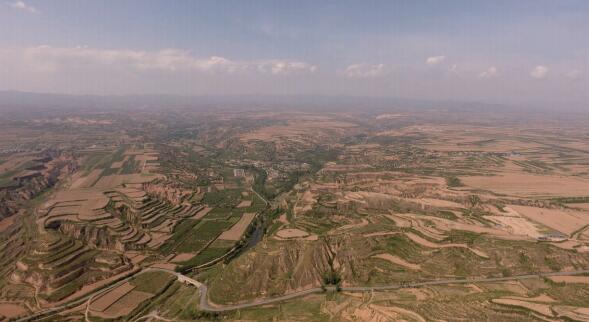
Distant View of the liujiawa Cemetery
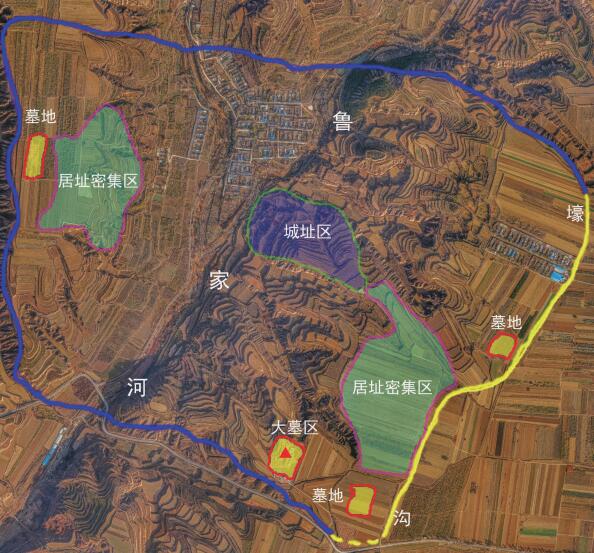
Distribution map of the site
Discoveries and Achievements
Four cemeteries with a total number of 150 tombs were probed by exploring: three cemeteries in eastern section and one in western section. Excavation Area No.1 in eastern section includes 73 tombs with different scales, two chariot pits and one horse pit. Out of 73 tombs there are two large tombs with two ramp passages in the shape of Chinese character “中” (M1 and M2) and one large earthen shaft pit tomb (M3). One chariot and horse pit with a south-north orientation was placed to the northwest of each large tomb with ramp passages. 44 tombs in total were revealed in western section. All of them are earthen shaft pit tombs with medium and small scale and south-north orientation (dominated by north orientation). M2 also found human sacrifice in niche. The rest of tombs did not find any evidence of waist pit or human sacrifice, which was in accordance with the major characteristics of Zhou period burials.
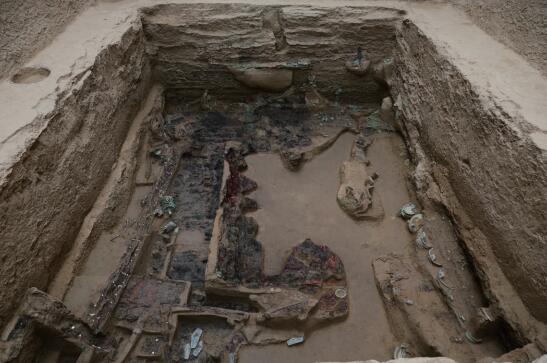
Inner coffin of tomb M2
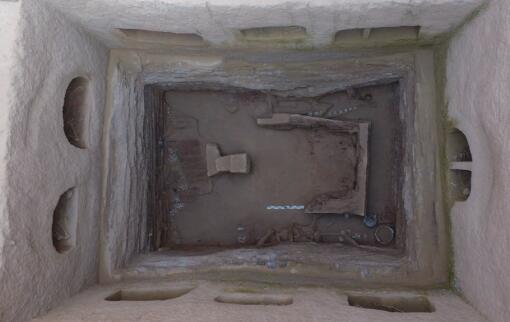
Tomb M3
M1 and M2 were laid out next to each other from east to west. The total length of M1 is 64 meters along its south-north axis. The tomb pit measures 11 meters in length, 10 meters in width and 12 meters in depth. The dimension and layout of M2 are similar to M1. One wooden bed enclosed on three sides with bronze ornaments at four corners was unearthed from M2. It may push back history of bed-using in China by the Spring and Autumn period. According to the huge dimensions of M1, it was believed that the social rank of the deceased should be a fief or equivalent, at least no lower than the rank of nobles. All other tombs are consistent with M1 and M2 in orientation and tomb structure. The ranks of the occupants in these tombs are believed as gentlemen or warriors.
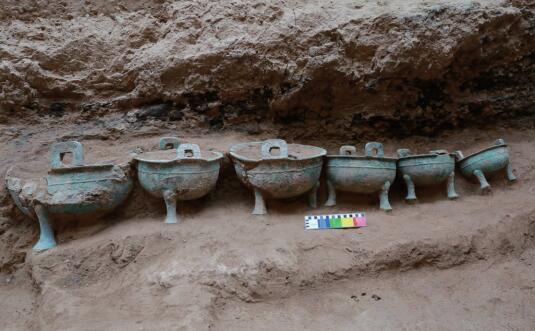
Bronze tripod-ding

Gold ornament
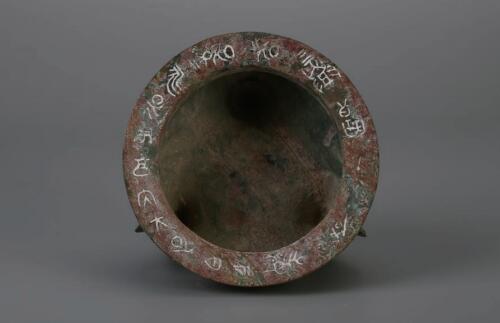
Inscriptions on bronze li illustrated prince of Rui State
A number of burial goods with great variety including gold, jade, iron, pottery and lacquer-ware were retrieved. The typological study on artifact style and form placed the relative chronology of the site to the early phase of the Spring and Autumn Period. A comprehensive analysis on multiple lines of features such as building remains, walls, ditches, craft production (i.e. bronze casting and pottery making), burial practice and grave goods (the assemblage of ritual bronzes and the bronze inscriptions of the Duke of Rui, the Prince of Rui) supported the hypothesis that the city ruin and attached cemeteries could be the remains of the capital city of the Rui state. In addition, some metal grave goods such as gold mace-heads, bronze fu vessels, iron spearheads and spiral earrings, gold bracelets suggested the cultural connections with the Eurasian Steppes. (Translator: Wen Chenghao)

